Fox Transfer Neo Dropper Post
Lengths Available: 100, 125, 150, 175, & 200 mm drop
Diameters Available: 30.9 mm, 31.6 mm, 34.9 mm (125, 150, 175, & 200 mm drop only)
Blister’s Measured Weights:
- Transfer Neo Remote: 58 g (w/ Matchmaker X clamp and battery)
- Transfer Neo: 712 g (30.9 x 200 mm, including battery)
MSRP:
- Transfer Neo Factory w/ remote, battery, and charger: $859 USD / $1,149 CAD / €1,100
- Replacement battery: $79 USD / $106 CAD / €76.75
- Replacement charger: $49 USD / $69 CAD / €61.25
Reviewer: 6’, 160 lb / 183 cm, 72.6 kg
Test Bikes: Rocky Mountain Altitude, Transition Sentinel, Contra MC
Test Locations: Washington, British Columbia, Arizona
Test Duration: 6 months
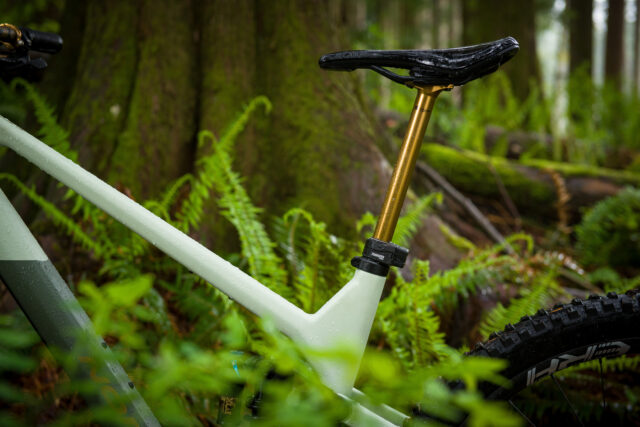
Intro
Electronically-actuated dropper posts aren’t new — the RockShox Reverb AXS has been on the market for more than five years now — but now Fox has their own take with the new Transfer Neo. So what exactly has Fox come up with? Let’s take a look.
Design
The very broad strokes of the Transfer Neo are similar to the Reverb AXS and a lot of other electronic dropper posts. The Transfer Neo communicates wirelessly between the remote and seatpost, with the remote using a CR2032 coil cell battery (which Fox says should last about a year under regular use) and a swappable, rechargeable battery for the post itself, which is good for a claimed 30 to 40 hours of ride time between charges.
(For reference, RockShox claims “up to 60 hours” of battery life from the Reverb AXS.)
The details, of course, differ more. In contrast to many of the other electronically-actuated dropper posts we’ve seen to date, the Transfer Neo places the battery at the seatpost collar rather than at the head of the post. Fox says doing so allowed them to make the total stack height slightly shorter, but also greatly reduce the possibility of the rear tire hitting the battery at bottom-out with the seatpost lowered all the way. Exactly how much clearance there is will, of course, depend on the bike in question, but Fox says that you should be able to run the Transfer Neo with the collar fully bottomed out on the vast majority of bikes without issue. This arrangement also allows the Transfer Neo to use a conventional two-bolt seat clamp arrangement, unlike the funkier (and occasionally slip-prone) clamp on the Reverb AXS.

The Transfer Neo battery charges on a cradle-style charger, very similar to that of SRAM / RockShox AXS ones, though the two batteries are, unfortunately but unsurprisingly, not cross-compatible. Fox’s charger uses a USB-C connection and a USB-C to USB-A cable is included. Fox also says that the Transfer Neo battery will be used on “future Neo components” but doesn’t expand on what those might be.
Fox says that the inner workings of the Transfer Neo are essentially the same as those of the standard Transfer, apart from the differences in actuation. In contrast with the typical cable-driven actuator on a standard dropper, Transfer Neo uses a motor and gearbox module at the bottom of the post to actuate the valve that controls the post; there’s a wired connection between the battery at the seatpost collar and the motor at the base of the post. Like the standard Transfer, there’s a standard Schrader valve at the top of the Transfer Neo to adjust the pressure in the return spring and thus the return speed.
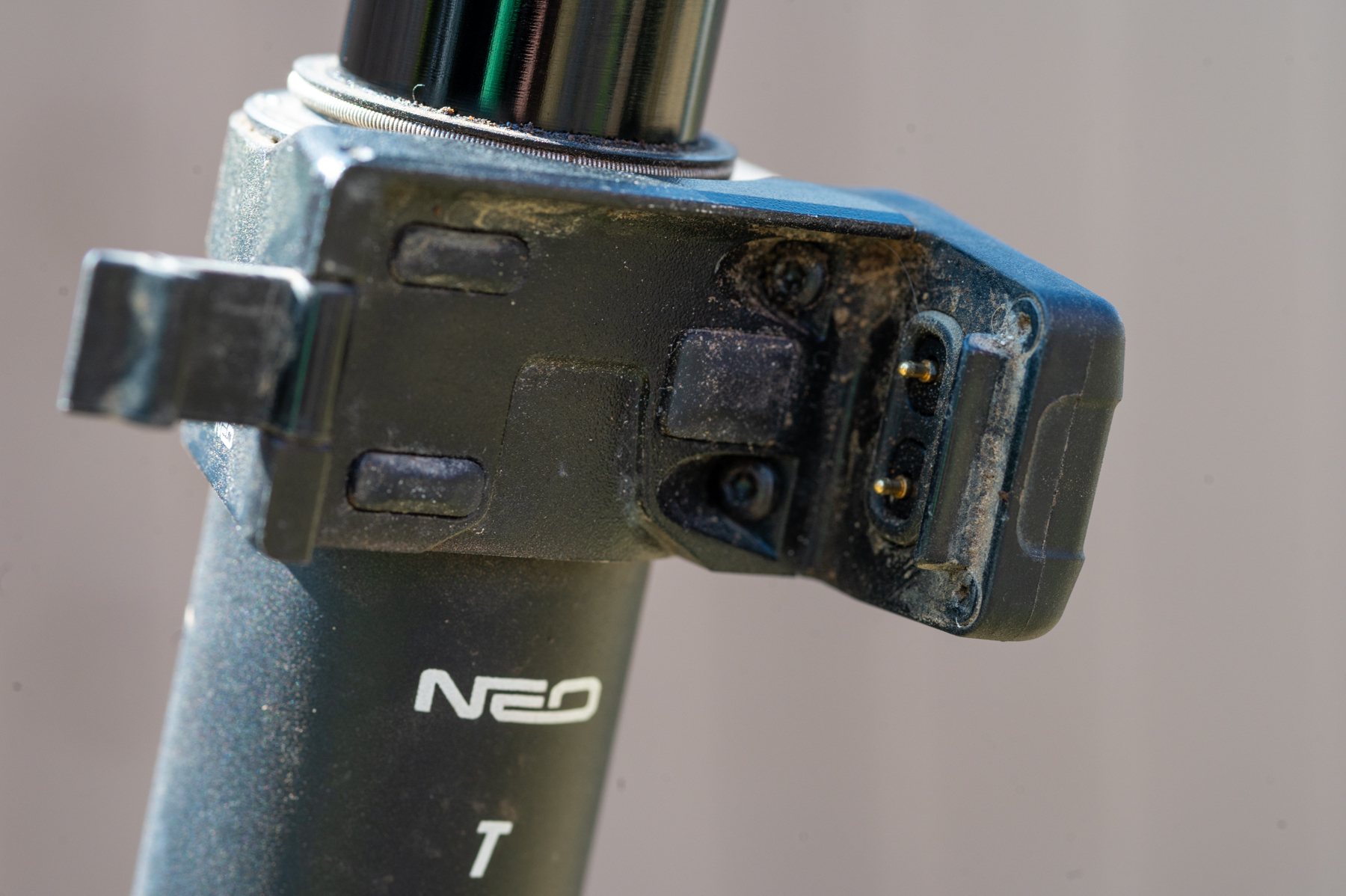
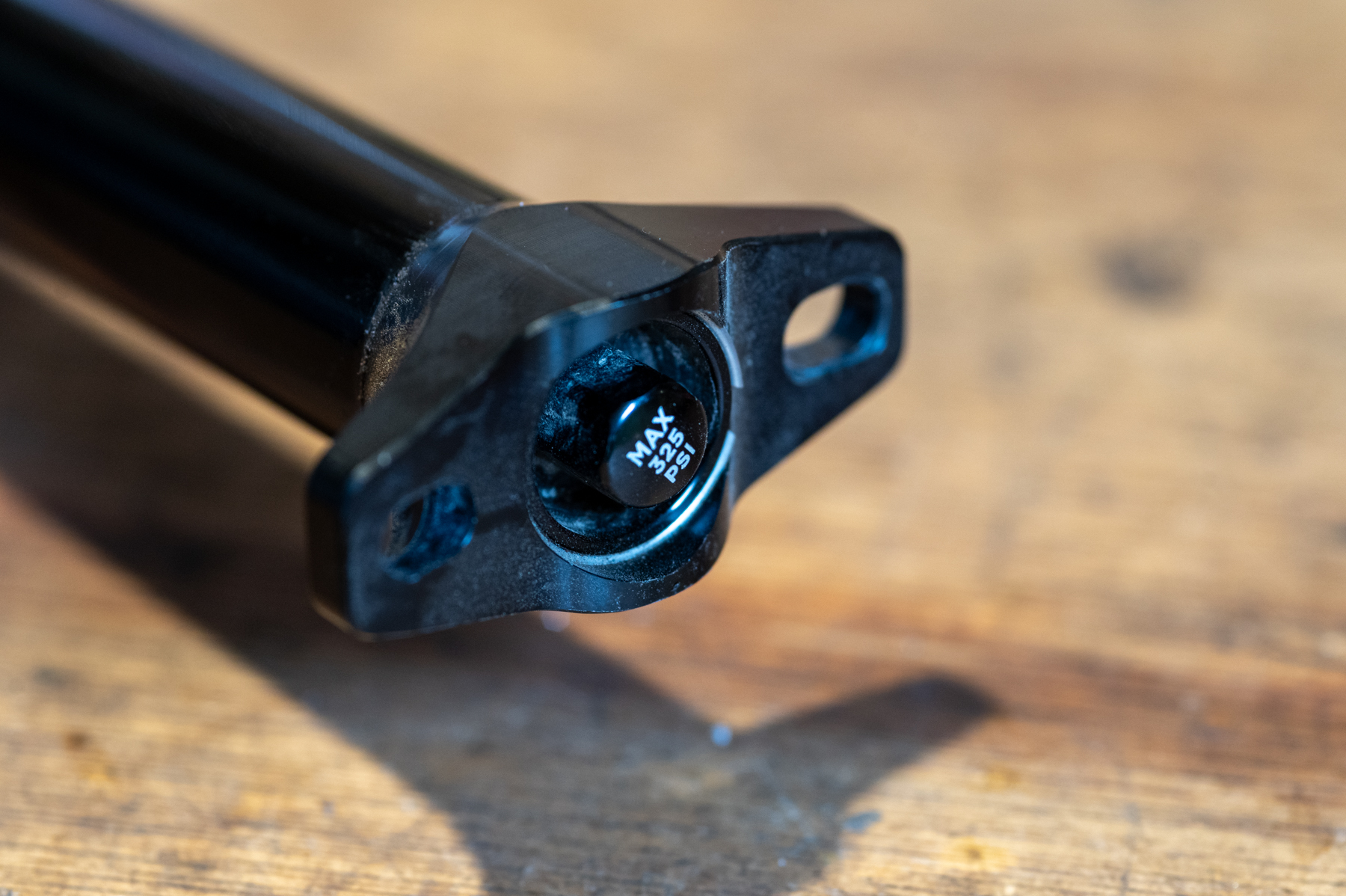
Despite sharing most of its internals with the new 2025 Transfer, which is fully user-serviceable, Fox says that the added electronics complicate things enough that they don’t recommend at-home service for the Transfer Neo. The recommended service intervals for the Transfer Neo are based on the number of actuations (i.e., how many times you raise and lower the post) rather than total ride time since the former is the more operative thing when it comes to wear and tear on the post. The electronic actuation of the Transfer Neo allows the post to track those actuations, and they’re displayed in the phone app (more on that in a minute) for reference. The collar is still removable for easy re-greasing of the seal and upper bushing, but the Transfer Neo will need to be sent in for a full service of the internals. The Transfer Neo is also rated to IPX7 waterproofness, meaning that it can be submerged up to one meter deep for 30 minutes without issue.
The Transfer Neo is available aftermarket in Fox’s standard gold Kashima-coated Factory guise; a black Performance Elite variant is offered OE (i.e., on complete bikes) only.
Like a lot of modern dropper posts, Fox uses a larger diameter upper shaft for the 34.9 mm version of the Transfer Neo (and the standard Transfer as well); the smaller diameter 30.9 and 31.6 mm variants share the same upper tube. The 34.9 mm diameter Transfer Neo is only available in the 125 mm drop version on up, but there’s a 100 mm version of the 30.9 and 31.6 mm diameters available. Using a larger diameter (and consequently stiffer) upper tube for the 34.9mm diameter post means that Fox can reduce the bushing overlap compared to the smaller diameter versions, and in doing so shorten the total length of the 34.9 mm variant. Fox hasn’t published full length info for the Transfer Neo but says that it has a 47 mm stack height measured from the bottom of the collar to the center of the seat rails, with the post lowered. That is 18 mm shorter than the Reverb AXS and 11 mm taller than the standard Transfer. (For reference, the OneUp V3 has the shortest stack height of any post we’re aware of, at 30 mm for most diameters and 25 mm for the 34.9 mm version.)

Fox has also developed their own wireless communication protocol for the Transfer Neo — which they’ve dubbed… Neo. Fox says that it’s over 100x faster than Bluetooth and 20x faster than their “closest competitor.” Fox says that helps them achieve just a 26-millisecond delay between pressing the lever and the post starting to move. How much that matters in practice for a seatpost is debatable — I can’t say I’ve noticed much of a delay from either other wireless droppers or regular cable-actuated ones — but making the system more responsive can’t hurt.
Remote
The remote for the Transfer Neo looks a lot more like a regular dropper lever than many of the other electronic dropper remotes on the market (especially the AXS Pod controller that SRAM debuted with their Transmission groupsets last year). The Transfer Neo lever has a fairly conventional-looking paddle with a co-molded rubber grip applied. But while the form factor looks similar to that of a normal cable-actuated dropper, Fox says that the Neo lever only needs to travel one-sixth as far as standard Transfer one to actuate and that it has much lighter action in doing so. The short throw also allowed Fox to move the lever farther forward under the bar (i.e., farther away from the rider’s hand) to reduce the likelihood of bumping it inadvertently while riding.
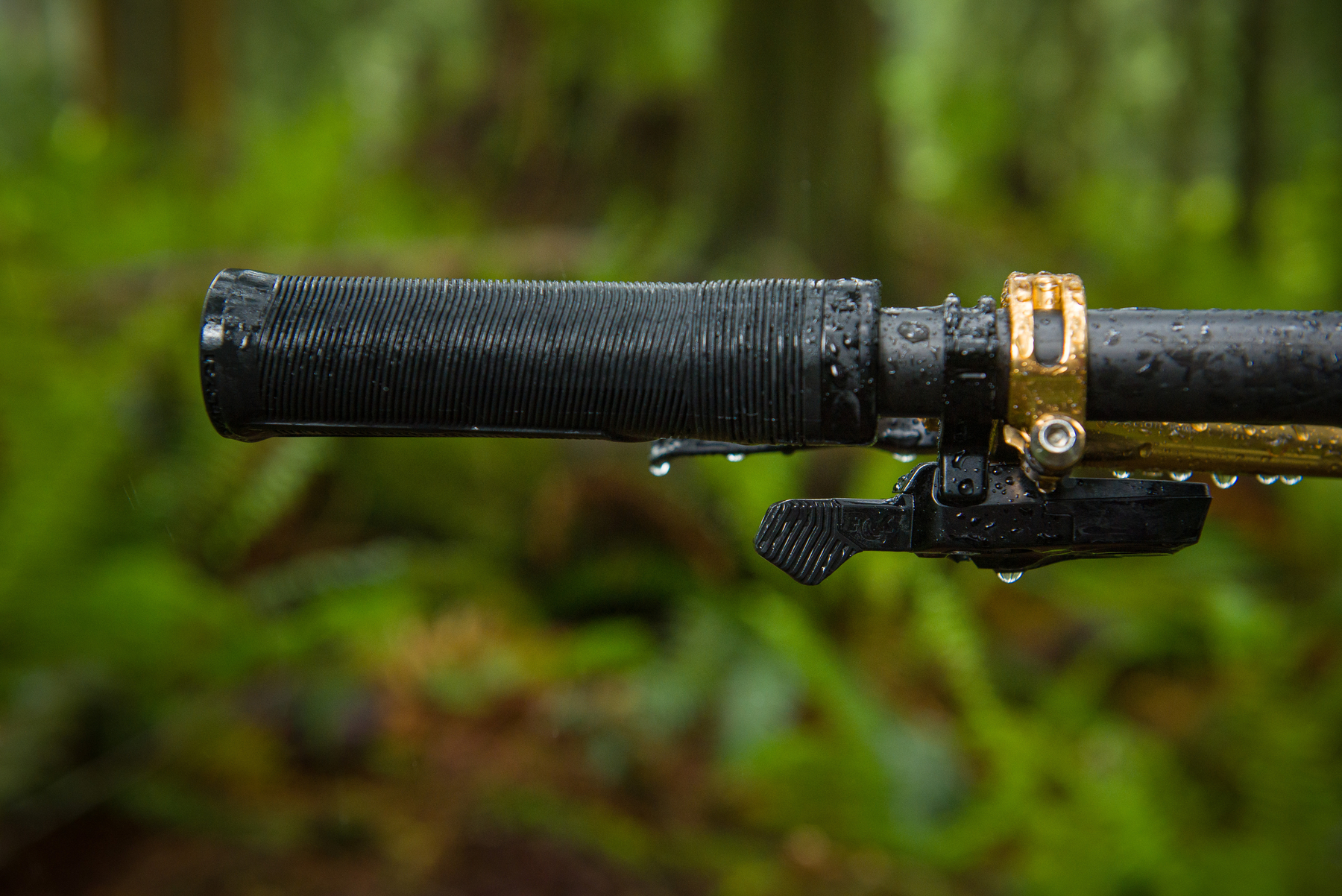
The Neo lever is compatible with a standard 22.2 mm standalone handlebar clamp and SRAM Matchmaker X or Shimano I-Spec EV integrated mounts. The brackets for all three are included.
The CR2032 battery that powers the remote can be swapped tool-free (using the new battery to open the hatch and then the old one to close it again afterward) and an indicator LED on the lever changes color as the battery fades. The phone app also displays the battery status.
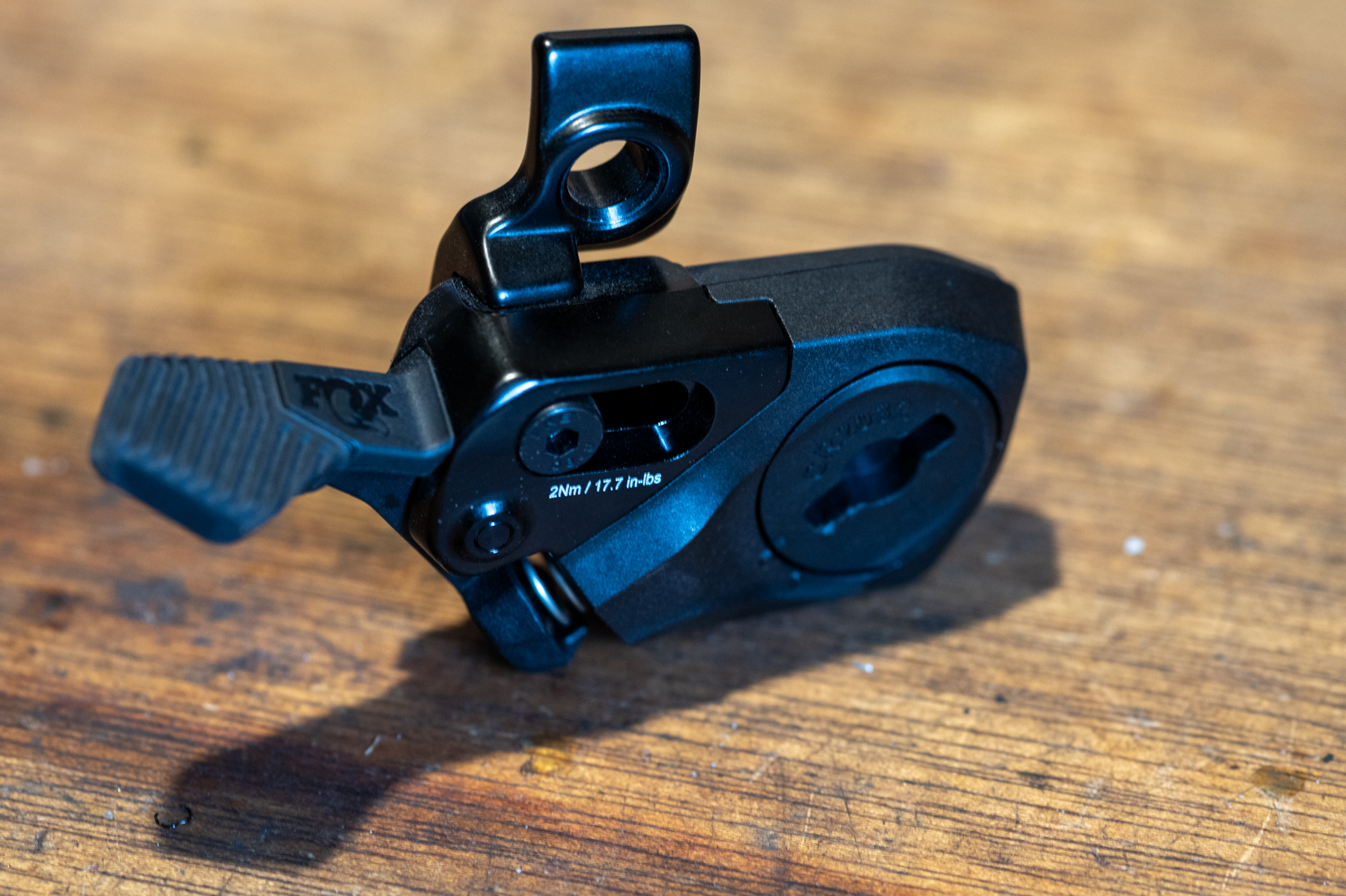
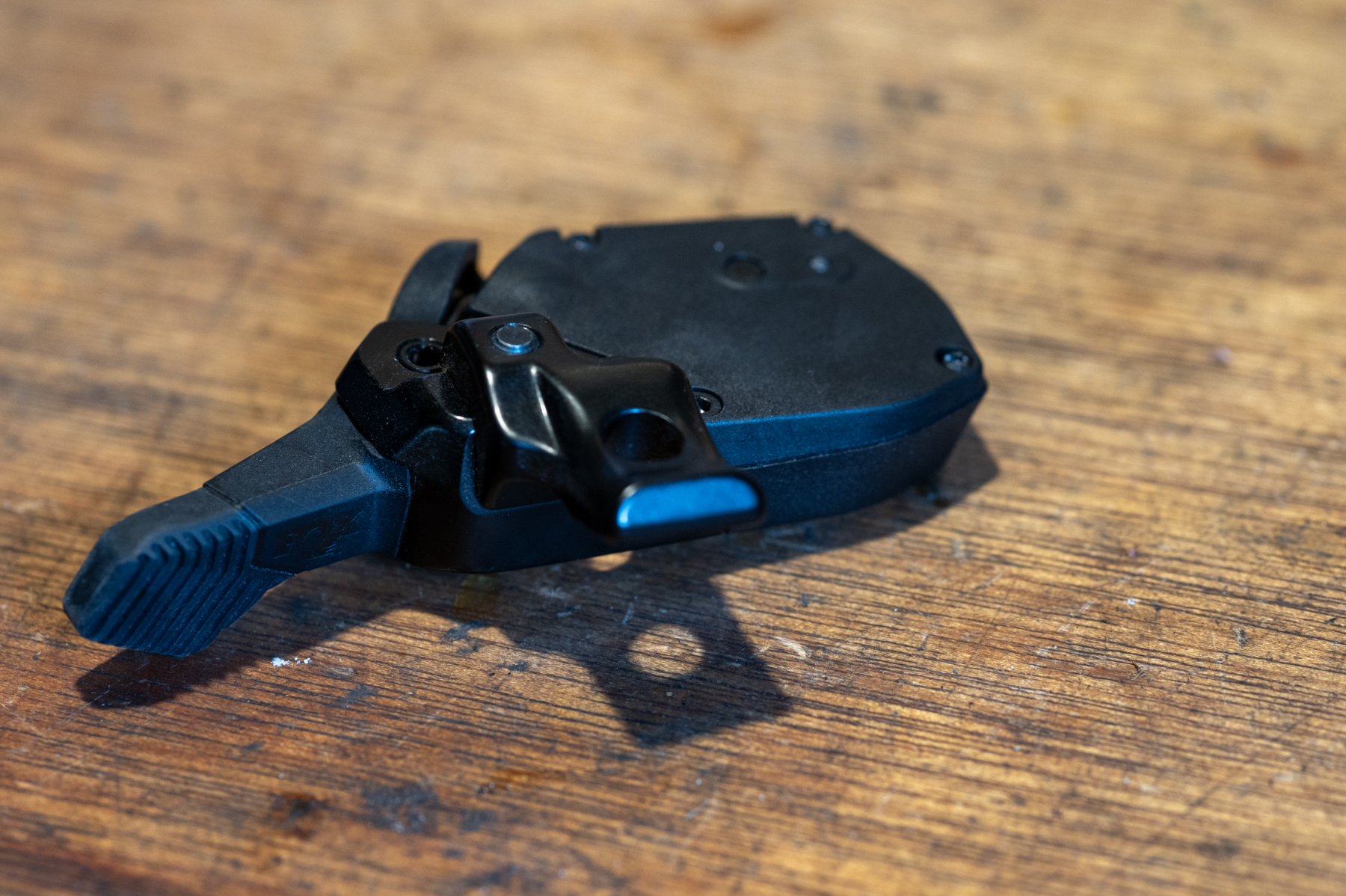
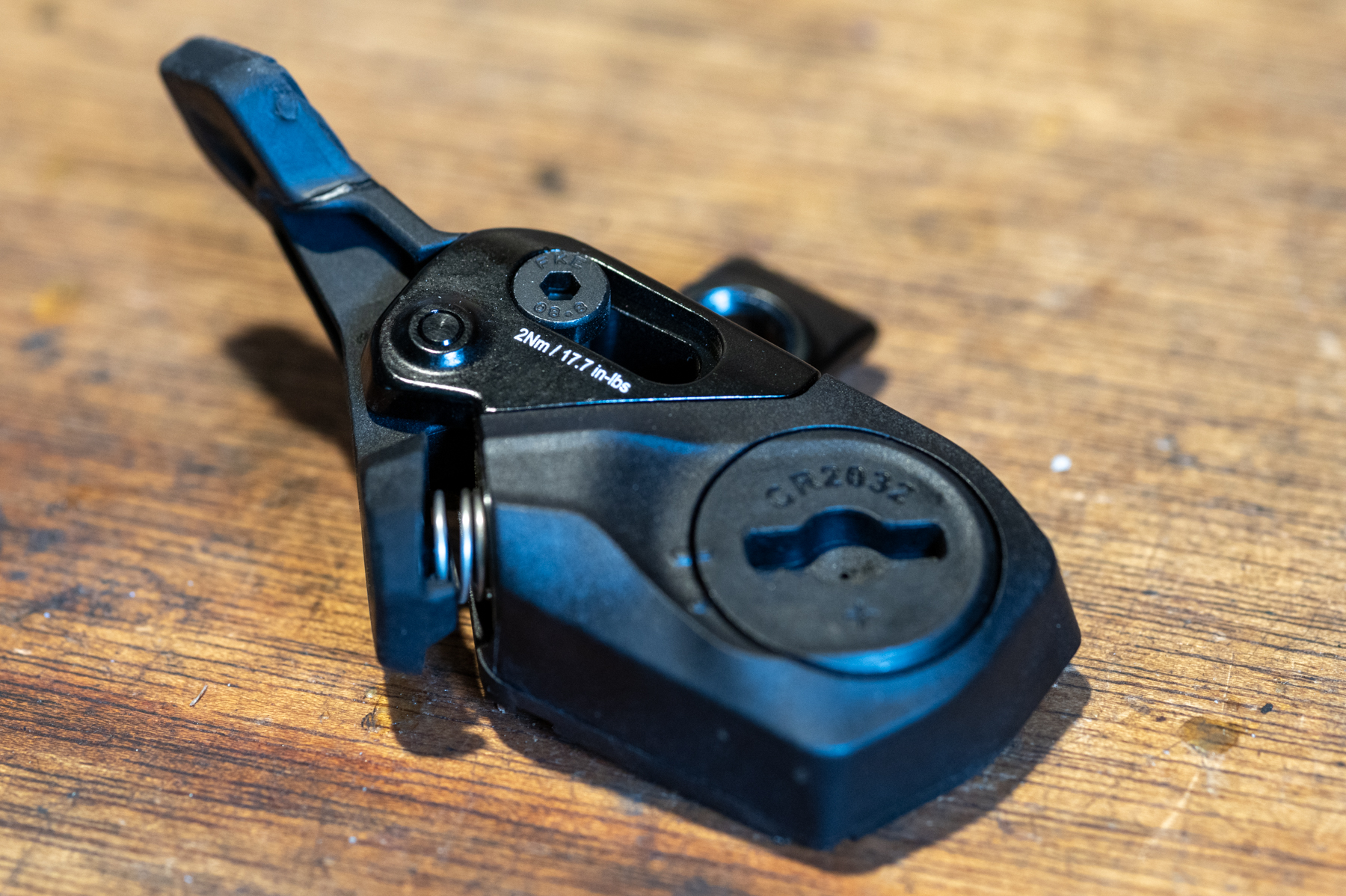
If the controller battery dies, the Transfer Neo can be actuated from the post itself by pressing and holding the pairing button until the indicator LED flashes white, actuating the post, and then pressing the pairing button again to lock it in position. You can also open and close the valve via the phone app. Speaking of which:
Phone App
Fox now has a phone app to go with the Transfer Neo. It’s not required to use the post but adds a variety of functionality including a handy pairing walkthrough to connect the remote and post at initial installation; more granular battery status for both the post and remote; tracking of the number post actuations (and a service reminder once it hits the recommended interval of 8,000); the ability to install firmware updates; and toggles for “Transport Mode” and “Bike Park Mode.”
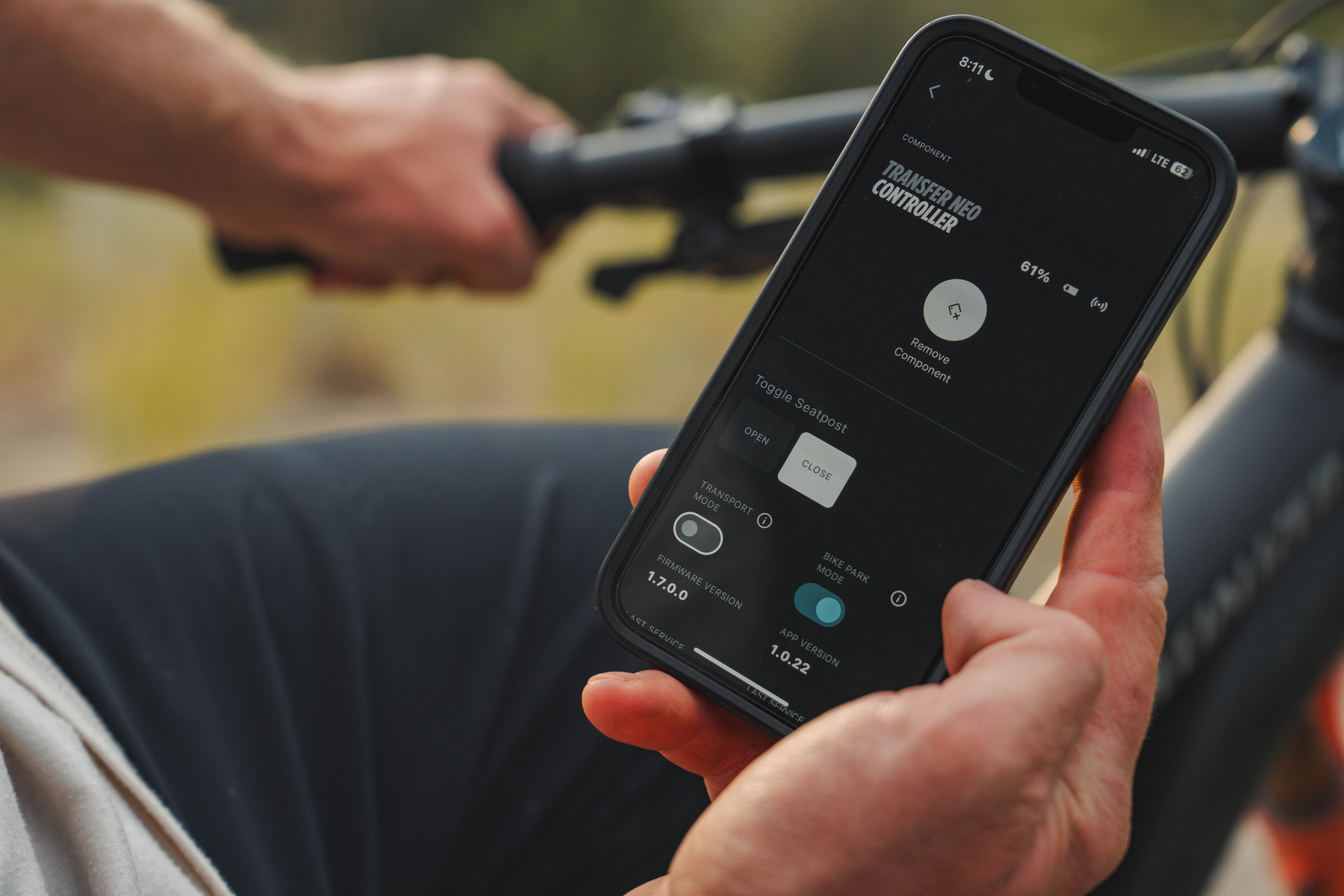
Transport Mode deactivates the “shake to wake” function of the seatpost to preserve battery life when driving with your bike. (You can, of course, also just remove the post battery to accomplish the same thing. Fox includes battery covers and a blanking plate to protect the exposed contacts on the post and battery when they’re separated.)
Bike Park Mode is meant to prevent you from inadvertently raising the post by bumping the remote, especially if you’re doing tricks that involve taking your hand off the bar. Activating Bike Park Mode disables the remote until you either turn Bike Park Mode back off via the app or press the remote four times in quick succession to override it.
FULL REVIEW
RockShox has long owned the wireless dropper post market with their Reverb AXS, but its 170 mm maximum travel doesn’t cut it for a lot of riders — myself included — now that longer options are commonplace. Fox has entered the wireless dropper market with their Transfer Neo and bumped up the maximum travel to 200 mm. That’s a good start, but does the Transfer Neo impress on the trail?

Mounting & Installation
Installing a wireless dropper is inarguably easier than dealing with a cable-actuated one. The industry has at least mostly converged on putting the cable head at the seatpost end for cable-actuated options, which is a big improvement over having it clamped at the post end, but it still takes a couple of rounds of running the housing into the frame, installing the post to determine the required length, removing the post to run the cable, and reinstalling everything once that’s sorted out. With the Transfer Neo, you just install the post and remote, pair the two, and you’re up and running.
There’s nothing weird going on with the seat clamp, either. By moving the battery to the collar of the seatpost rather than putting it at the top like the Reverb AXS, Fox could give the Transfer Neo a conventional two-bolt seat clamp. That familiar design makes it easy to set the seat position and angle, and prevents any possible slipping of the seat clamp, which can sometimes be an issue with the Reverb AXS.
Different dropper designs have significant differences in stack height and insertion depth, which can have a significant bearing on how long a post you can fit in a given frame. Leaving space for the battery means that the stack height of the Transfer Neo is a bit taller than a number of mechanical options out there; at 47 mm, it’s 11 mm higher than the standard Transfer, 17 mm higher than the OneUp V3 (22 mm higher than the 34.9 mm diameter OneUp), and 15 mm higher than the Wolf Tooth Resolve rev2. The Transfer Neo is 17 mm shorter than the Reverb AXS, though.
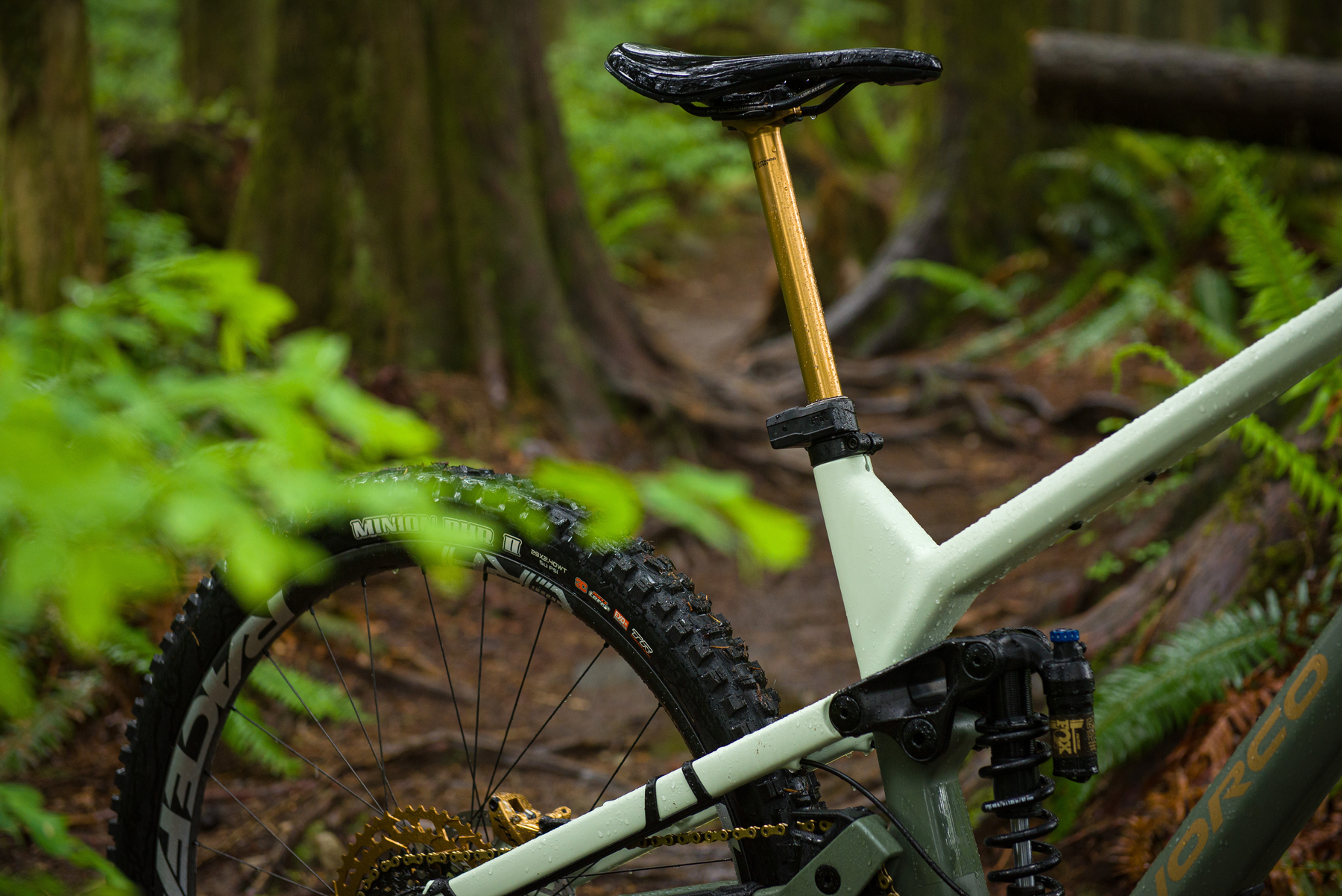
At 322 mm (200 mm drop version), the Transfer Neo’s insertion depth is 17 mm longer than the 210 mm OneUp V3, and 31 mm longer than the 200 mm Resolve rev2. To be fair, those are the two shortest posts for a given amount of drop that I’m aware of, but a cable-actuated post is still the way to go if you’re after the absolute maximum drop you can squeeze into a given frame.
Comparing the 175 mm Transfer Neo to the 170 mm Reverb AXS, the minimum extended height for the Transfer Neo is still 12 mm shorter than that of the Reverb AXS — despite the slightly longer drop — but the Transfer Neo’s insertion depth is almost 25 mm longer.
Things are tidy at the remote end. Aftermarket versions of the Transfer Neo come with interchangeable mounting brackets for SRAM Matchmaker X and Shimano I-Spec EV integrated clamps, as well as a standalone 22.2 mm one. All three are specific to the Transfer Neo remote — Fox runs the mounting bolt in the opposite direction to most clamps, with the bolt threading into the clamp bracket rather than the remote itself, which allows them to put a slot in the remote for finer adjustments of its position along the bar.
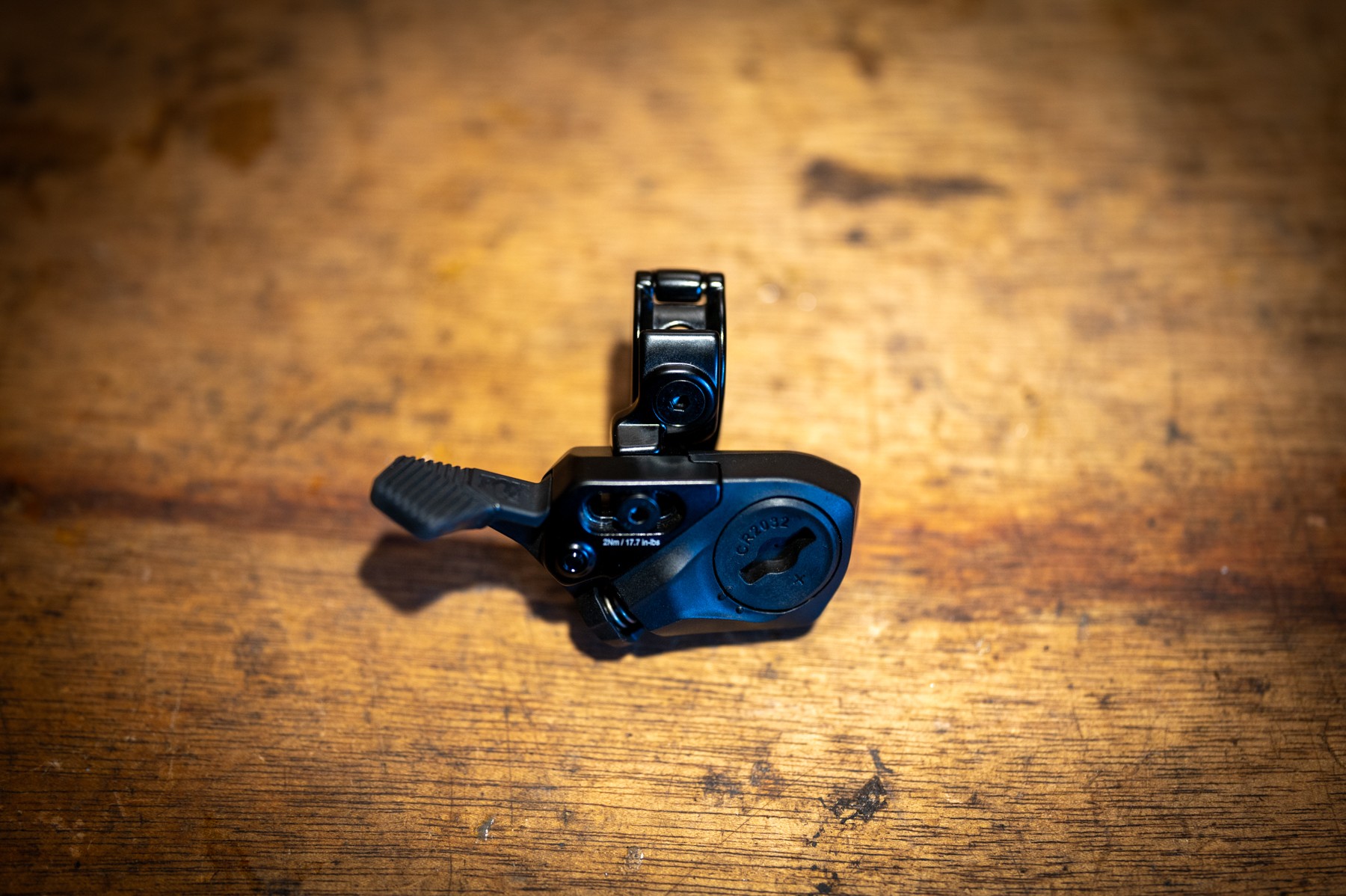
That adjustability will be welcome for a lot of folks, but the tradeoff is that, because the Transfer Neo uses its own bracket design, there isn’t a mirrored opposite-handed version of the Matchmaker X clamp that you can swap in to move the remote farther inboard. I’ve got big hands (XL or XXL glove, depending on the model) and need to move my shifters and dropper post levers pretty far inboard towards the stem to be able to reach them comfortably without scrunching up my thumbs. With standard Matchmaker X clamps, I swap the left and right clamps so that they’re offset inboard of the brake levers rather than outboard of them; with the Transfer Neo, I need to run the 22.2 mm clamp mount instead. I don’t mind at all, but if you also prefer to swap Matchmaker X brackets around and really want an integrated clamp, you’re probably out of luck. I think most folks will be just fine.
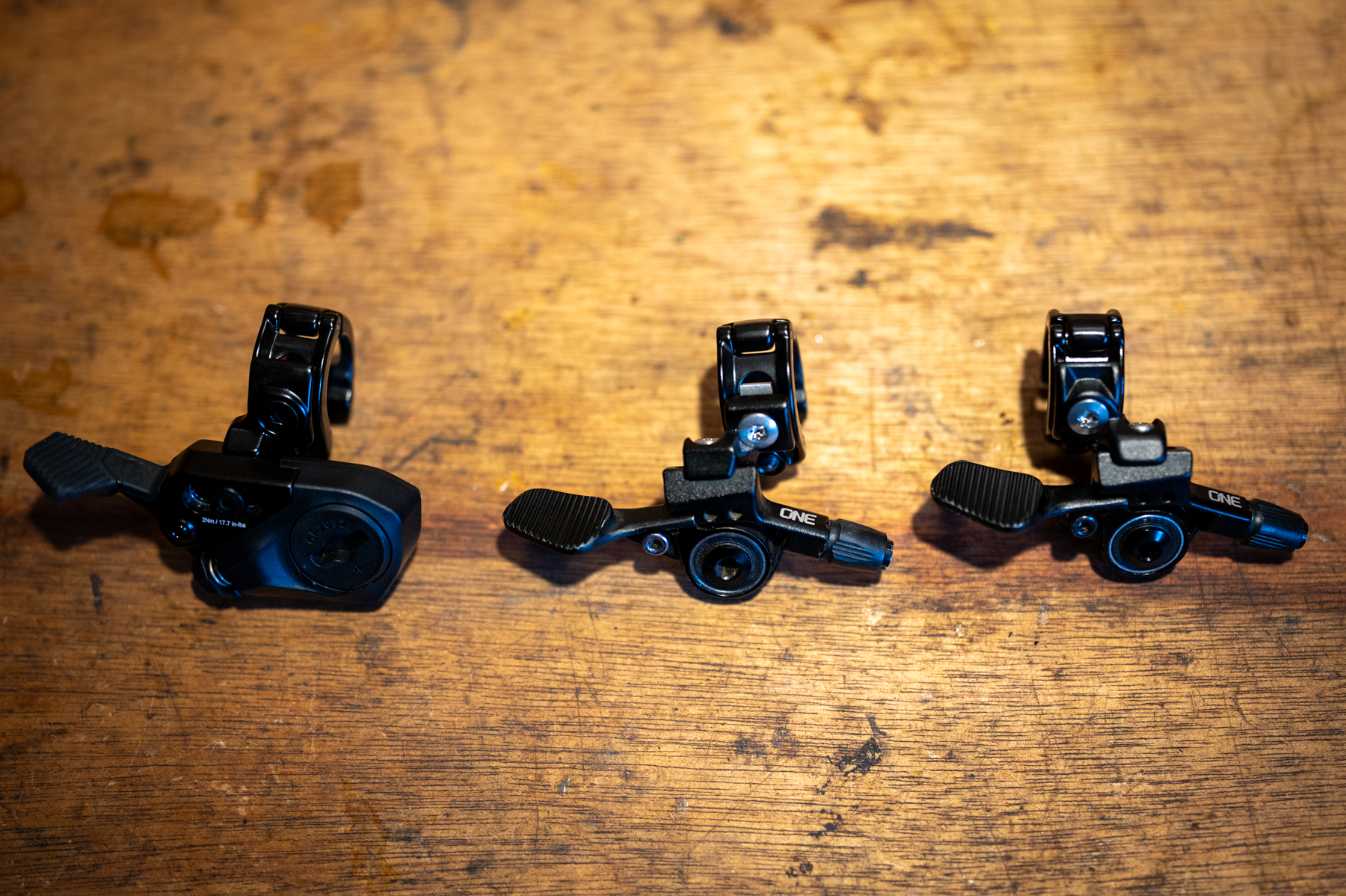
On-Trail Performance
I’ve been riding the same Transfer Neo regularly since July 2024 and have shorter stints on a couple of other ones. All three have worked flawlessly, going up when I want them to, staying put otherwise, and have yet to show any signs of needing a service or any significant side-to-side play. Most dropper posts have at least a little bit of side-to-side movement, often straight out of the box; the Transfer Neo has a tiny bit, but it’s more subtle than most and hasn’t been at all noticeable on the trail.
I also like the Transfer Neo remote a lot. Fox has done a nice job of making it look and feel like a conventional dropper remote paddle, just with lighter action and a shorter throw than any cable-actuated post I’ve tried since there’s no need to pull a cable. The thumb paddle has a nicely textured and grippy rubber thumb pad, and while its orientation isn’t adjustable relative to the body of the remote itself, I haven’t felt any need to mess with it. I much prefer the ergonomics of the Transfer Neo lever to SRAM’s Pod controller — there’s more tactile feedback to the Transfer Neo’s lever, and its much more defined paddle hasn’t left me fumbling for the button like I sometimes do with the Pod.
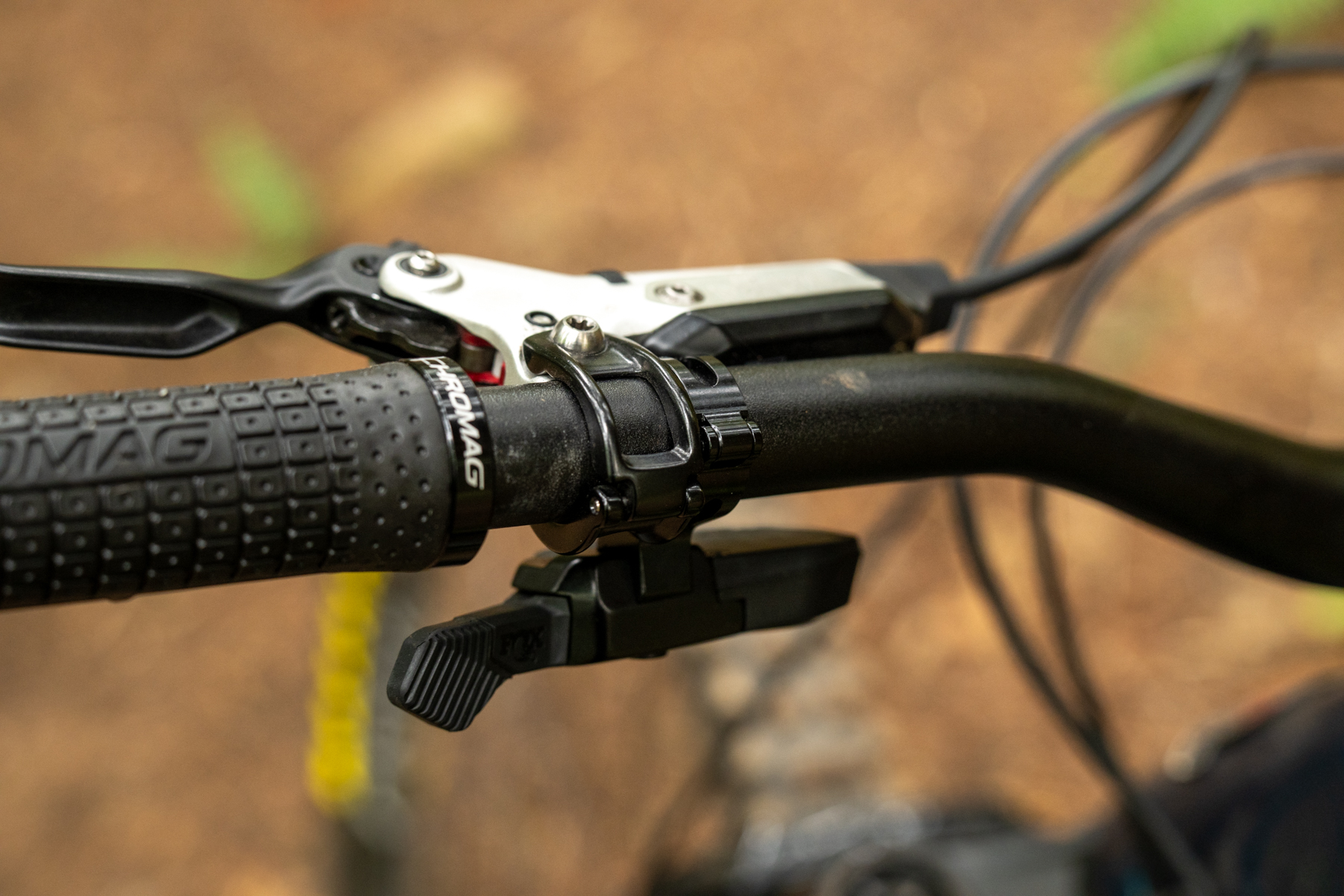
The Transfer Neo’s battery life is also solid, with plenty of life for my purposes. The original coin cell battery in the remote is still going strong, and Fox’s claimed 30 to 40 hours of ride time out of the main seatpost battery seems about right — or maybe even a little conservative, at least in my neck of the woods. A lot of my riding involves extended climbs to get to extended descents, which means that I simply don’t need to actuate the post as often as I do in more varied, rolling terrain; that, of course, extends the battery life considerably.
I’ve also spent a bit of time with the Transfer Neo down in Arizona — where the punchier terrain means I’m moving the post constantly — and was able to do a couple of consecutive long rides with plenty of battery life to spare. I didn’t push my luck too much since getting stuck with a fixed-height seatpost would be very unfortunate in that terrain, but so long as I charged the battery every few days, I didn’t need to worry about it. You can, of course, bring a battery pack to charge the Transfer Neo battery if you’re on a longer trip away from wall power, and/or just bring a spare battery.
We’ve had a number of issues with the prior-generation Transfer getting sticky and not moving through its travel freely, but the three different Transfer Neo posts I’ve tried haven’t displayed even a hint of similar issues. That’s been true of the standard version of the new mechanically-actuated Transfer as well, though I’ve spent less time on that at this point. Given that the new Transfer and the Transfer Neo share most of their internals, it’s not surprising that they’ve behaved similarly, and it’s great that the stickiness issue seems to have been resolved.
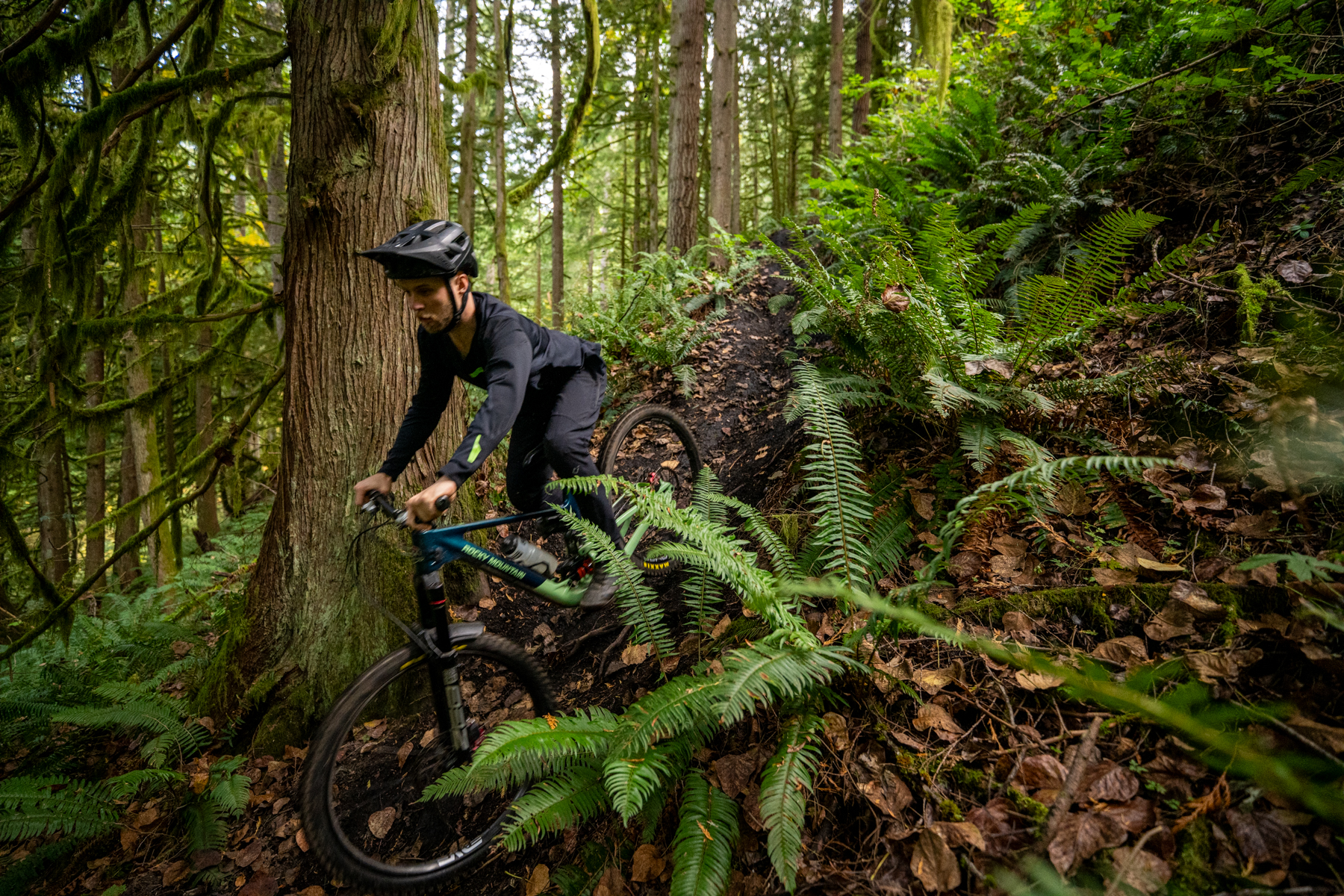
It is also worth bearing in mind that the standard version of the updated Transfer is fully user-serviceable at home with standard shop tools, whereas the Transfer Neo needs to be sent in for service, due to the added complexity of the electronics. The Transfer Neo also lacks the travel adjustability offered on the standard one.
Bottom Line
The Transfer Neo is easily my favorite wireless dropper post that I’ve ridden to date. It’s worked reliably, the lever ergonomics are excellent (at least with the 22.2mm standalone clamp — I’m rarely a fan of integrated ones), the battery life is solid, and it’s generally given me little to complain about.
Whether it’s worth springing for is a trickier question. The Transfer Neo costs a lot more than the standard Transfer or any number of other good cable-actuated posts, and my personal take is that I don’t find the upsides of the wireless arrangement to be worth paying extra for — especially given the hassle of needing to keep batteries charged.
Of course, that’s true for electronic droppers in general — not just the Transfer Neo — and wireless posts have their fans, for entirely valid reasons. Installing a wireless dropper is quicker and easier than a cable-actuated one, and makes it pretty easy to use a single post across multiple bikes if you’re so inclined. The lever action of the Transfer Neo is lighter and takes a shorter throw than any cable-actuated post I’ve tried to date, and it’s easy to imagine how some folks would prefer that feel.
(I’m usually fairly ambivalent, but I’ve got large hands that make managing longer throw levers easy. I will say that I was a big fan of the Transfer Neo’s light action while I was nursing a sprained left thumb, which made pushing a stiffer lever uncomfortable.)
If you’re drawn to a wireless post for any of those reasons, the lack of a cable, or whatever else, the Transfer Neo is an excellent one.

How fast is the reaction speed compared to the AXS Dropper? The fast reaction of the AXS dropper is one of my favorite features of the wireless dropper.
Have fun!
It’s fast. I’d be hard pressed to notice a difference between the Transfer Neo and Reverb AXS on that front.